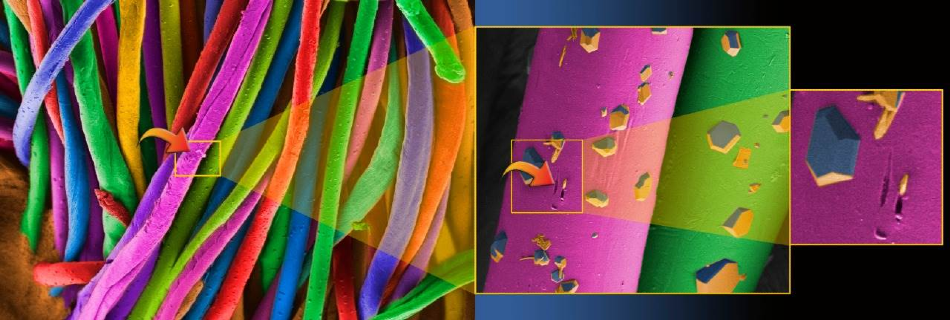Jun 22 2020
In collaboration with various universities, Nanox has designed a fabric with silver microparticles incorporated on its surface and featuring the ability to disable the SARS-CoV-2 virus in laboratory tests. In the tests, the material removed 99.9% of the virus just after two minutes of contact.

Image Credit: RUVID.
The Universitat Jaume I of Castelló (Spain), the CDMF (Brazil), and the ICB-USP have joined together for the development of this material.
The material has been designed by scientists from the Institute of Biomedical Sciences of the University of São Paulo (ICB-USP), the Laboratory of Theoretical and Computational Chemistry of the Universitat Jaume I of Castelló (Spain), as well as the Center for the Development of Functional Materials (CDMF) with the help of the São Paulo Research Foundation (FAPESP).
A combination of cotton (polycotton) and polyester was used for the fabric that includes two kinds of silver microparticles infused on its surface using an immersion, drying, and fixing process. A patent application for the fabric has already been registered by Nanox.
We have established agreements with companies and factories in the textile, plastic and polymer sectors that will use this material for producing and marketing protective masks and hospital clothing.
Luiz Gustavo Pagotto Simões, Director, Nanox
More recently, scientists at CDMF collaborated with a research team from the UJI that was coordinated by Professor Juan Andrés Bort from the Department of Physical and Analytical Chemistry at the UJI. The researchers together initiated a series of tests to assess the use of silver nanoparticles against coronavirus.
This was done concerning the evidence discovered in the scientific literature regarding their potential effectiveness against other kinds of model viruses.
In this regard, the company has collaborated with the ICB-USP scientists, who had separated and cultured in laboratory SARS-CoV-2 samples acquired from the first two Brazilian patients diagnosed with this disease.
The outcomes of the analyses illustrate that the fabric samples with various silver microparticles infused in the surface disabled 99.9% of the virus following 2 and 5 minutes of contact. Besides the tests that have been developed to assess its antiviral, fungicidal, and antimicrobial activity, the fabric has also been tested for removing the hazard of causing dermatological issues.